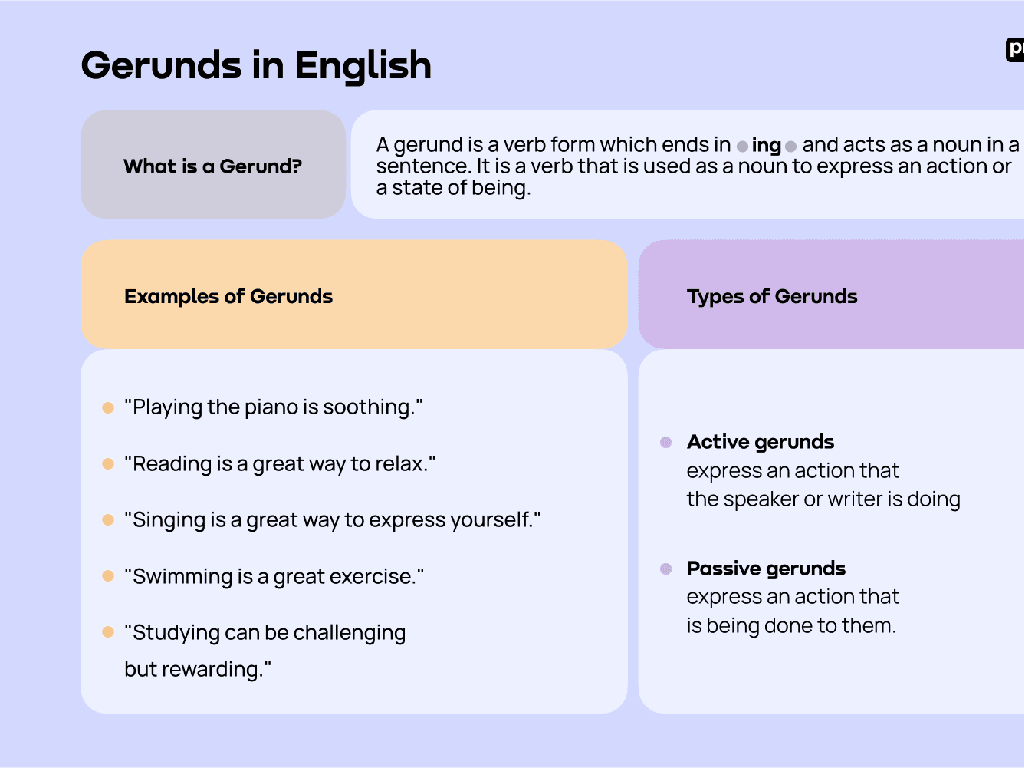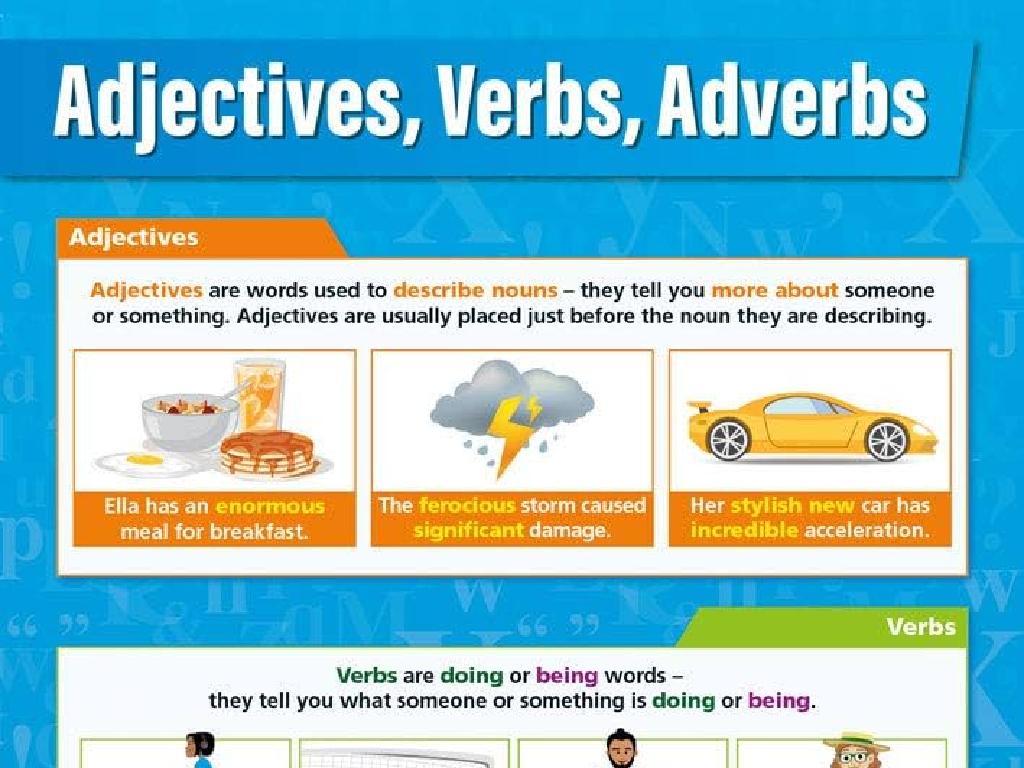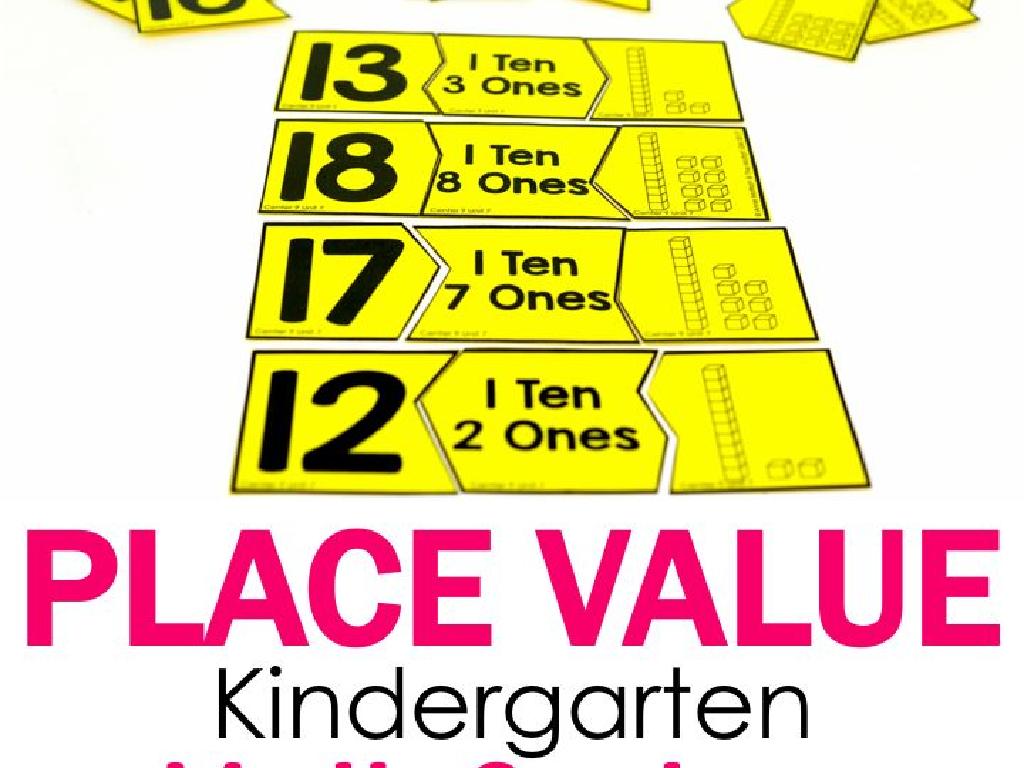Counting On The Hundred Chart
Subject: Math
Grade: First grade
Topic: Counting To 100
Summary: This first grade math presentation guides students through counting to 100 using the hundred chart, a key tool for understanding number patterns and sequencing. With activities like counting by ones, fives, and tens, students build strong counting skills while visually tracking numbers. The lesson encourages hands-on participation and teamwork, making math interactive and fun while reinforcing foundational number sense for future math success.
Please LOG IN to download the presentation. Access is available to registered users only.
View More Content
Welcome to Counting!
– Greetings First Graders!
– Today’s goal: Count to 100
– Introducing the hundred chart
– A grid with numbers 1-100
– How the chart helps us count
– It shows number patterns clearly
|
This slide is designed to introduce first graders to the concept of counting to 100 using a hundred chart. The hundred chart is a valuable visual aid that helps children understand the pattern of numbers and how to count in increments. It’s a grid that contains numbers from 1 to 100, and it’s a great way to help kids visualize the counting process. During the lesson, guide the students through the chart by pointing to each number as you count together. Encourage them to notice patterns, like how each row adds up to 10. This will be a foundational skill for their understanding of numbers and math.
Exploring the Hundred Chart
– What is a Hundred Chart?
– It’s a grid filled with numbers from 1 to 100
– A tool for counting, adding, subtracting
– Makes math like counting, adding, and subtracting fun and easy
– Numbers 1 to 100 on a grid
– Each row has 10 numbers, and there are 10 rows in total
– Understanding the number arrangement
– Notice patterns: each row or column increases by 1 or 10
|
The hundred chart is a fundamental tool in first-grade mathematics, helping students visualize the number sequence from 1 to 100. It’s a 10×10 grid where each row represents a series of ten numbers. This visual aid is excellent for teaching basic arithmetic operations such as addition and subtraction by using the patterns in the chart. For example, moving down a column increases the number by ten, while moving across a row increases the number by one. Encourage students to explore the chart and discover these patterns themselves, as it will aid in their understanding of number relationships and lay the groundwork for more advanced math concepts.
Counting 1 to 20 on the Hundred Chart
– Let’s count from 1 to 20 together
– I’ll point to each number on the chart
– Say the numbers out loud with me
– Repeat the numbers after me as we count
– Practice makes perfect!
– The more we practice, the better we’ll get at counting!
|
This slide is designed to introduce first graders to counting within the first 20 numbers of the hundred chart. The teacher will guide the students through the chart by pointing to each number from 1 to 20, ensuring that the students follow along and count out loud. This activity helps students to become familiar with the number sequence and reinforces their counting skills. It’s important to encourage all students to participate and to count together as a class. The repetition and visual aid of the hundred chart will support their learning. After the group activity, students can be asked to practice counting on their own or with a partner to build confidence.
Counting by Tens on the Hundred Chart
– Counting by tens is fun
– Let’s count: 10, 20, 30… to 100
– Start at 10 and add 10 each time
– Each column decreases by ten
– Look at the chart: 10, 20, 30 are in a line
– Practice counting down by tens
– Try counting backwards from 100
|
This slide introduces students to the concept of skip counting by tens, which is a foundational skill in understanding place value and arithmetic. Start by engaging the students in a counting activity, counting aloud from 10 to 100 by tens. Use a hundred chart to visually demonstrate how each step down a column increases by ten. Highlight the pattern that forms when counting by tens and encourage students to notice the alignment of numbers in the columns. For practice, have students count down by tens from 100 to reinforce the concept. This activity can be turned into a game where students stand up or sit down as they count, making the learning process interactive and fun.
Finding Patterns in the Hundred Chart
– The hundred chart has patterns
– Each row increases by one
– Look at the rows, each box is one more than the one before
– Let’s discover patterns together
– We’ll explore and find patterns as a class activity
– Patterns help us count faster
|
This slide is aimed at helping first graders recognize and understand the patterns in a hundred chart. The chart is a valuable tool for learning to count to 100, and patterns make it easier and more fun. Start by pointing out that each row on the chart increases by one as you move from left to right. Engage the students in a class activity where they can come up to the chart and point out patterns they notice, such as the last digit in each row being the same or each column going up by 10. Encourage them to explain the patterns they find to the class. This interactive approach will help solidify their understanding of numerical order and the concept of addition.
Skip Counting on the Hundred Chart
– Skip counting is like hopping
– We can skip by 2s, 5s, and 10s
– Practice: Counting by 5s
– Instead of 1,2,3, we jump 5,10,15, and so on
– Let’s count by 5s together
– We’ll count: 5, 10, 15… all the way to 100
|
This slide introduces the concept of skip counting, which is a fundamental skill in understanding number patterns and preparing for multiplication. Explain that skip counting is like hopping over numbers and is a faster way to count. Focus on counting by 5s as it’s visually appealing on the hundred chart and easy for first graders to grasp. Engage the students in a fun activity where they can stand and count aloud by 5s, using their fingers to represent each increment of 5. This kinesthetic approach helps solidify the concept. Encourage them to look for patterns on the hundred chart as they count, such as the numbers ending in 5 or 0.
Counting to 100 on the Hundred Chart
– Counting to 100 together
– Follow along on the chart
– Point to each number as we say it
– One number at a time
– Ready, set, count!
|
This slide is designed to engage first-grade students in a counting activity using the hundred chart. The goal is to count aloud together from 1 to 100, reinforcing number recognition and sequencing. Encourage the students to point to each number on the chart as the class counts together. This will help them visually track their progress and understand the pattern of numbers. As an activity, consider breaking the class into smaller groups and having each group count by tens, or challenge individual students to count by fives. Offer praise and gentle correction as needed to ensure that all students feel confident and included in the activity.
Class Activity: Fill in the Missing Numbers
– It’s your turn to fill in the chart
– Use counting skills to complete it
– Start from a number you know and count on
– Work together with a partner
– Two heads are better than one, discuss if you’re unsure
– Help each other find the numbers
– Share your ideas on how to find the missing numbers
|
This activity is designed to encourage collaborative learning and reinforce counting skills using a hundred chart. Provide each pair of students with a partially filled hundred chart and ask them to fill in the missing numbers. Encourage them to start from a number they know and count on from there. Remind them to use their fingers if needed and to check each other’s work for mistakes. Possible variations of the activity could include: using different starting points, timing the activity for a fun challenge, or having students explain their counting strategy to the class after completing the chart. This hands-on activity not only solidifies their understanding of sequence and number patterns but also promotes teamwork and communication skills.
Congratulations on Counting to 100!
– Celebrate reaching 100
– Understanding the hundred chart
– The chart helps us see number patterns.
– Practice makes perfect
– Keep using the chart to count faster.
– You’re a counting star!
|
This slide is meant to congratulate the students on their achievement of counting to 100 using the hundred chart. It’s important to reinforce their understanding of the chart and encourage them to continue practicing. The hundred chart is a valuable tool for visualizing number patterns and relationships, which aids in developing number sense. Regular practice with the chart will help students count more quickly and accurately. Celebrate their success and motivate them to keep practicing to become even more proficient in counting. You can suggest fun counting games or challenges as homework to make practice enjoyable.





